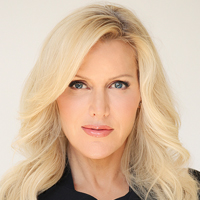
I will never forget Clarice (not her real name). She became my client while married to her first husband and, five years after our initial meeting, she found herself a 50-something widow who knew next to nothing about her spouse’s financial affairs (a situation that is still all too common). As we mapped out a financial plan and she began to realize that she had resources at her command, things started to gradually brighten for her.
Eventually, Clarice met someone and re-married. But after 12 years, her second marriage fell victim to “gray divorce,” and she parted ways with husband No. 2. Once again, we needed to do a careful inventory of her options and develop an independent, secure path forward.
Bereavement and divorce are two of the most traumatizing events anyone can face, no matter which phase of life they occur in. And for American women, who statistically have retirement savings balances more than 50% lower than their male counterparts, facing financial uncertainty in the later years can present some harsh challenges.
And the problem isn’t just with retirement savings. A recent study by the TIAA Institute found that women typically collect about 22% less in Social Security benefits than men. The reasons aren’t hard to discern; by stepping aside from their careers in order to be caregivers to either children or aging relatives, women sacrifice, on average, $131,000 in lifetime Social Security benefits.
All this points to how vital it is for advisors with widowed or divorced female clients to prepare themselves to provide both financial coaching and accurate advice on everything pertaining to retirement savings and income. This is especially important with regard to options available through the Social Security system that may provide them with enhanced income in their retirement years.
Multiple marriages and spousal benefits
Negotiating the complexities of the Social Security system is never a picnic, and helping a client figure out the complex calculus surrounding spousal benefits can be even trickier. But for older women clients, spousal benefits can be a foundational part of retirement income planning. It should be noted that spousal benefits are available for both male and female spouses, but the vast majority of spousal benefits claimants are women (by nearly 11 times).
Many women who have had multiple marriages, whether they ended by death or divorce, may not realize that they have a choice for which spousal benefits to claim. While no one can receive benefits from more than one source at a time, it is possible to choose among multiple available sources to ensure the maximum benefit.
For women like Clarice, who have little to no earnings record with Social Security capable of qualifying them for a benefit on their own, making the right choice for which spousal benefits to claim becomes crucial.
Keep in mind that the spousal benefit is capped at 50% of the “earning” spouse’s Social Security benefit at full retirement age (FRA). The Social Security Administration will pay whichever benefit is greater: the claimant’s own benefit or the spousal benefit. If, for example, a woman is eligible for a $1,000 monthly benefit on her own record, but the spousal benefit would amount to $1,200 per month, her benefit will be “topped up” to $1,200.
Two choices
In Clarice’s case, there were two spousal benefits to choose from: that of her deceased first husband, and that of her ex-second husband. As long as a marriage lasts at least 10 years and the claimant is not married at the time, spousal benefits are available.
Because Clarice’s second marriage lasted 12 years, she needed to evaluate which spousal benefit would provide her with the most income. As it turned out, her second husband’s lifetime earnings record qualified him for a benefit at FRA of just over $3,500.
By comparison, Clarice’s deceased husband qualified for a lesser benefit, in large part because of the shorter span of years during which he paid into the Social Security system. Even the survivor benefit (100% of the deceased husband’s benefit at FRA) was less than what she could get by filing for the spousal benefit from her ex.
“But we’re divorced,” Clarice said when I advised her that she needed to file for the benefit based on her ex’s earnings record. “I don’t want to have to tell him why his Social Security is getting cut in half.”
At this point, I needed to explain to Clarice that receiving a spousal benefit had no effect whatsoever on her ex-husband’s benefit. In many cases, the earning spouse or ex-spouse may not even know that the spousal benefit is being paid. In fact, the earning spouse may not even currently be receiving benefits (if, for example, he is waiting until age 70 in order to receive the maximum benefit).
The only requirement is that he be eligible to receive benefits. (By the way, if the earning spouse waits beyond FRA to claim benefits, that has no effect on the amount of the spousal benefit; it is capped at 50% of the primary earner’s available benefit at FRA.)
Timing matters
Divorced and widowed persons can claim spousal benefits beginning at age 62 (early retirement) as long as the earning spouse or ex-spouse has reached FRA, but be aware that doing so will permanently reduce the benefit. Just as with claiming on your own record, waiting until FRA to claim guarantees the maximum spousal benefit.
For example, if the earning spouse on whose record the spousal benefit is being claimed qualifies for a $2,000 monthly benefit at FRA, the spousal benefit available — also at FRA — would be $1,000. But if that same claimant decided to claim at age 62 instead of FRA, the benefit would be reduced to $650 — permanently.
Kimberly Foss, CFP, CPWA, CFT-I candidate is president and founder of Empyrion Wealth Management and author of “Wealthy by Design: A 5-Step Plan for Financial Security.” Kimberly combines a technical expertise with a real passion for her work with her clients, including family stewards, women in transition and thriving retirees. She regularly shares her financial expertise with leading media outlets. In 2021, Kimberly was named to Investopedia 100 Top Financial Advisors and recognized with the ThinkAdvisor LUMINARIES award.







